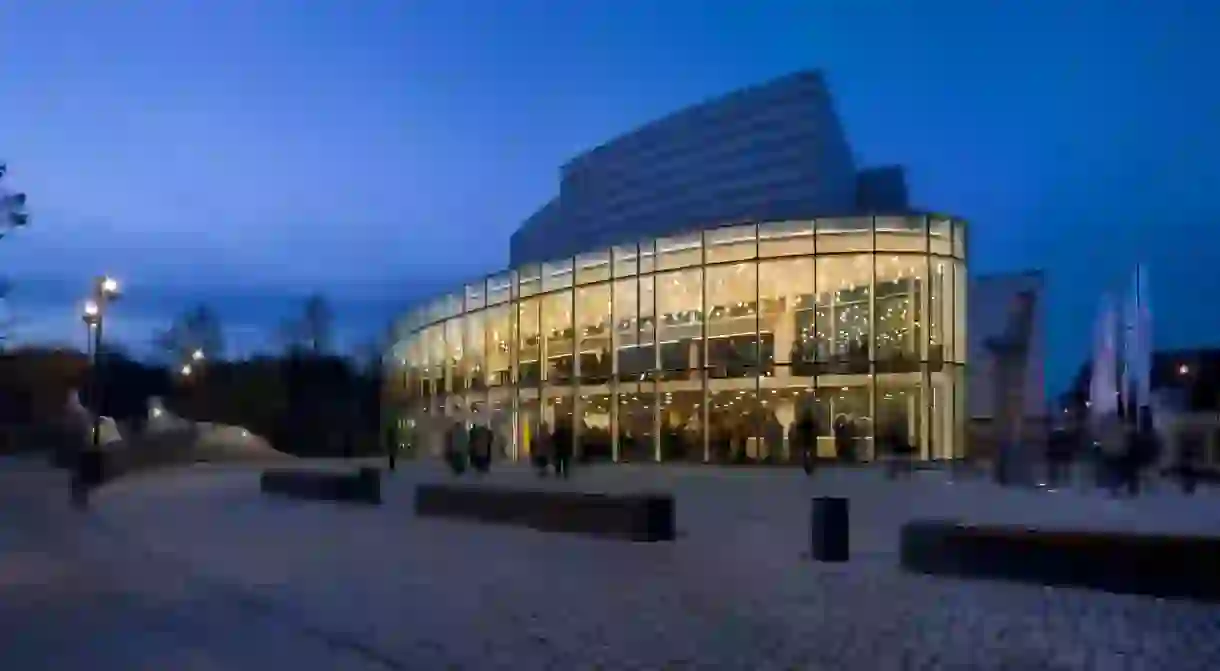The Bamberg Symphony Orchestra: Successfully Blending History and Modernity

The Bamberg Symphony Orchestra traps a piece of history in its distinctive sound whilst displaying the beauty of its hometown. But what is the story behind that sound and what does the new chief-conductor happen to do with it? A short trip through time, history and the power of music.
Borders can be a tricky thing. We feel that today on our very selves. War has always moved and shifted borders and Europe can tell a thing or two about that. And so does the Bamberg Symphony Orchestra. Böhmen, an area which nowadays lays in the Czech Republic, used to be under German regime and so did Prague. Only the second world war changed that and with that signed the end of the German Symphony Orchestra Prague. The musicians fled to the west, where they gathered in Bamberg and founded the Bamberg Symphony Orchestra. Bamberg was at that time in a state of recovering the damage the second world war has caused. Money was short, especially for art. Witnesses to history say, musicians at that time literally had to play for their lives. This is how the distinctive sound and appearance of this orchestra originated.

But how can one describe this unique sound? Interesting enough, that an orchestra can be recognized only by its tonal appearance. Talking purely technical, the orchestra owns a complete set of horns from the same instrument manufacturer and line, giving the horn section a homogeneous sound. Same counts for the trumpets. Unlike many American Orchestras where the trumpets sound very shiny, sparkling and sometimes even a bit sharp, Bamberg’s trumpets appear rather gloomy and soft. Fingerings of the string section help as well. The lower strings of a violin sound rather dark, heavy and with more body than the higher ones. Some notes can be played on two different strings and depending on the fingering, which is given by the concert master and first violin, the sound of the violins can very much vary.

In concert, the orchestra, which finds itself among the best of the world, comes with a bursting, volcanic appearance. Almost like an enormous animal which is tamed, formed and worked by the conductor. One can feel the energy, the fun and tension of this acoustic body. Maybe also because this night, they were lead by their designated conductor Jakub Hrůša. Even though Hrůša will take the orchestra over from chief conductor Jonathan Nott next season, a persuasive harmony between musicians and conductor is already strongly perceptible. A cooperation feeling so logic which will surely lead to a fruitful future.
Prague is the missing link between the Orchestra and their freshly announced chief-conductor Jakub Hrusa. Born in Brno did he get his musical education in Prague which makes him perfectly suitable for the Bamberg Symphony Orchestra, who want to further enhance their musical background while exploring new ways. This night, the concert hall and home to the orchestra was full with well dressed, elegant people. Nothing over the top or fancy. One could feel, that the audience is quite confident in both the clothes and the environment. Friends were greeted, last orders for the break were made, one last glimpse at the program of tonight’s concert before seats were taken.
The Josef-Kleiberth-Hall where the concert took place, can not really convince one with its beauty, but the sound is marvelous. Japan’s star-architect for sound engineering Yasuhisa Toyota turned the building with a monumental restoration into one of Europe’s best concert halls. Best proof of the quality of the hall gave Christoph Eß with the opening piece ‘Air’ by Jörg Widmann (composer in residence) for solo horn. It starts with long but very quiet notes and with closed eyes, one could not even tell if this was a horn, a clarinet or a flute which produces these utterly soft, floating vibrations. Just behind the soloist stood a concert piano, open, and that close, that he played right into it. A fine resonance from the piano strings gave the performance a hall as if played in a church. Every sizzling and cracking was hearable and there was a tension in the air when Christoph Eß finished.

Johannes Brahms‘ masterpiece of romantic music, his second piano concerto performed by old hand Rudolf Buchbinder continued the program. Technically immensely difficult but played by Buchbinder so wonderfully unagitated one could just marvel. Tschaikowsky‘s Symphony ‘Pathétique’ brought the evening down to a round figure. After a concert like that, one understands why Bamberg Symphony Orchestra is among the best. This orchestra releases its audience impressed, pleasant and with a smile on the face into the night.

But the orchestra has more up their sleeves than just playing outstanding but traditional concerts. Moderated evenings exclusively for students, concerts for children and teens, dressed up musicians at carnival and open rehearsals already count since many years to their standard repertoire. Bamberg is Bavarian’s poetry slam stronghold. It is fondly called Slamberg which brought the orchestra to combine poetry slam and symphony to a concert format called ‘Slam-Symphony‘. Three poets perform their texts about a symphony. Distinctive melodies and passages are introduced to the audience before the slamer talks about them. When the whole symphony is played in the end, the stories ad a complete new level of experience of listening. Their new motto for next season is ‘Aufbrüche – new departures’ where the orchestra will not only travel to destinations where they have not played yet. A challenge in itself for this orchestra which has an extremely rich history in traveling. They will also further enhance new concepts of performing. A much needed healthy way of dealing with classical music and tradition in a contemporary manner.













